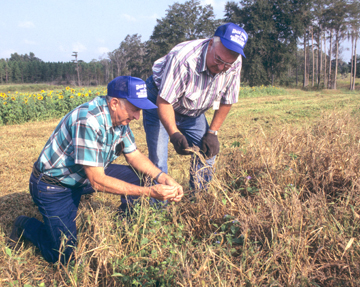
First of three phases runs from Oct. 1 – 24
From the FWC – By Stan Kirkland, FWC
For many Florida hunters the mourning dove season marks the opening of the hunting season. The first phase of the season runs from Oct. 1 – 24, with shooting allowed from noon to legal sunset.
Both mourning doves and white-winged doves are legal to take during the three phase season. Eurasian collared doves, an exotic species now found throughout many parts of the country, are also legal to take but do not count against the daily bag limit.
For generations hunters have gathered to dove hunt and to take part in cookouts prior to the hunt and renew fellowships. It’s also a time and place when many youth accompany their parents or mentors to the dove field and experience the hunt, with or without a firearm.
I vividly remember my first dove hunts with my schoolteacher father in the 1960’s in Jackson County, north of Sneads. We typically hunted recently picked peanut or corn fields. Dad started me out with a .410 single-shot and usually placed me near him along a fencerow or a tree line.
Those first few years I rarely killed a dove but I gained a passion for dove hunting that still endures today. An invitation to go on a dove hunt is something I try not to turn down.
Doves eat seed or grain. Hunts typically take place over recently harvested fields of peanuts, corn, millet, sunflowers, dove proso or bene (sesame seed). However, a field with seed or grain on the ground doesn’t automatically mean doves will be there when you want to have a shoot.
“Well, first of all, you have to have something on the ground for them to eat but doves will come into some fields better than others,” said Kurt Hodges, assistant coordinator for small game management for the Florida Fish and Wildlife Conservation Commission (FWC). “If agricultural fields are nearby, such as a freshly harvested peanut field, they’ll sometimes bypass what looks like a good field to us and go to a nearby field.
“We ran into this near Monticello several years ago when we had a beautiful field with sunflowers, corn, millet and sesame seed, but we had very few doves.”
Doves are one of the most numerous game birds in the continental United States. Mourning doves nest in every state in the country. There are an estimated 450 million doves each year. Surveys show that hunters kill about 45 million across the country each season.
According to Hodges, doves have been banded through a national program since 2003 and band returns show the majority of the birds we harvest in Florida were born and raised locally.
The FWC has a number of dove fields available to hunters who purchase a special opportunity dove field permit. Information about this permit, how to apply, and where the fields are located is available at the FWC website, MyFWC.com/dove.
Additionally, some wildlife management areas are open to dove hunting. Area information is available on the FWC website.
The daily dove bag limit in Florida is 15 birds.
Dates for the second and third phases are Nov. 12-27 and Dec. 10-Jan. 8. Shooting during the latter two phases is legal from 30 minutes before sunrise to sunset.
Those who dove hunt on private property need only a Florida hunting license, unless exempt, and a free Migratory Bird Permit. The license and permit can be obtained from any license agent, tax collector’s office or at MyFWC.com/license.
As with any hunting involving shooting firearms, it’s recommended hunters wear protective shooting glasses and use hearing protection.
